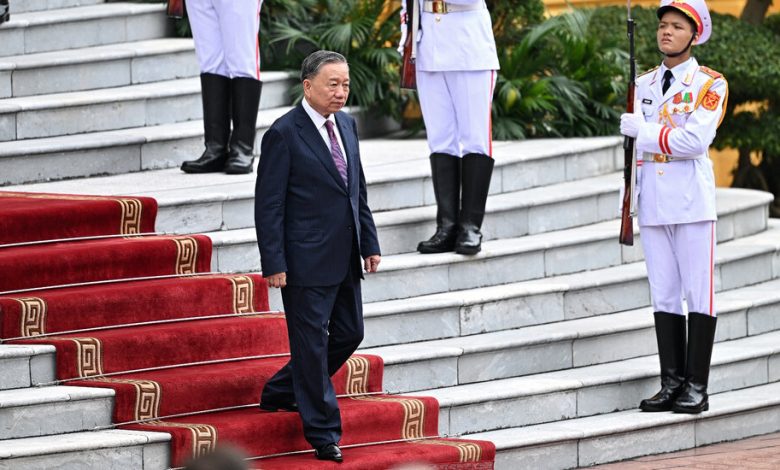Death of Vietnam’s Top Leader Raises Questions of Succession

With the death Friday of Vietnam’s long-serving Communist Party general secretary, Nguyen Phu Trong, the country’s top leadership role has been left at least temporarily to President To Lam, who is best known for implementing a sweeping anticorruption drive.
Mr. Lam, 67, was named Thursday to take over the general secretary’s duties at the Politburo, the Party Central Committee and the Secretariat for an unspecified period. He will also continue as president, a largely ceremonial post for which he was chosen just two months ago.
Whether he will retain the duties of general secretary on a more permanent basis depends on the Politburo, which is expected to decide whether to confirm his new role. If it does, Mr. Lam would have the chance to consolidate his position within the party before it holds its next congress in 2026 to select the country’s top leaders for the next five years.
“This has probably set the stage for To Lam to become the next general secretary,” said Nguyen Khac Giang, a visiting fellow at the ISEAS-Yusof Ishak Institute, a research organization in Singapore. “He would be the front-runner, but it is not certain he would be chosen, because there are different factions in the party that won’t want him to gather so much power.”
Vietnam analysts said it was unlikely that the death of Mr. Trong would lead to any changes in foreign policy or trade relations, as Vietnam will continue balancing its relations with the United States, China and Russia.
Vietnam, one of the world’s few remaining Communist dictatorships, is headed by a collective of four leaders known as the four pillars — the party general secretary, the president, the prime minister and the chairman of the National Assembly — with the general secretary seen as the most powerful.
